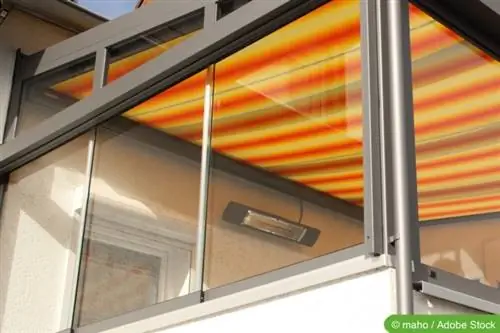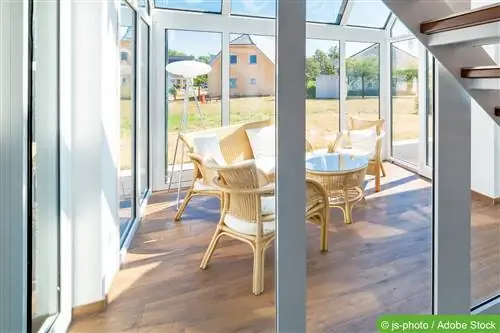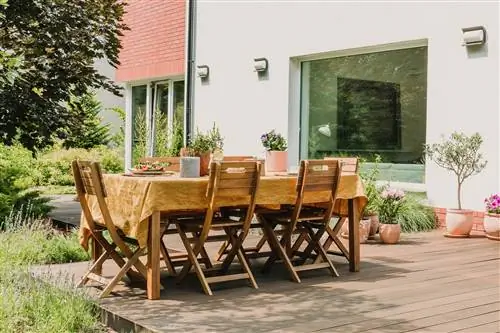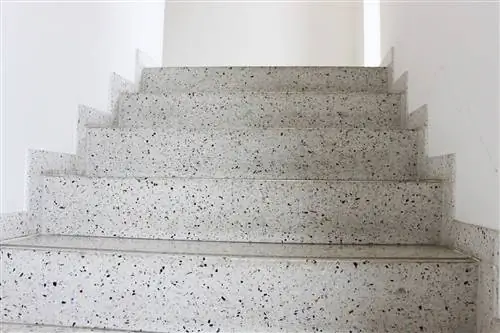- Author admin [email protected].
- Public 2023-12-17 03:39.
- Last modified 2025-01-24 12:45.
Whether and to what extent the winter garden is part of the living space is important for the living space calculation. The area can have a significant impact on the rental price or the applicable property tax. What is important is the basis used for the calculation. Here you will find all information on the topic.
Living area: calculation basis
Essential when determining the living space is the calculation basis used. In Germany you usually come across two legal bases according to which the living space is calculated differently:
- Living Space Ordinance (WoFlV)
- DIN 277

Living Space Ordinance
The Living Space Ordinance is a calculation basis that is valid throughout Germany. It can be chosen by the landlord as long as it is not a publicly funded rental property. In this case - the so-called price-controlled living space - the WoFlV always applies. For many tenants, the WoFlV is the preferred variant for calculating living space anyway, as it only includes the living space and no other usable space in the calculation.
This is also evident in winter gardens. Although they are always counted as part of the living space, these are different percentages depending on the type of winter garden. What is important for the calculation basis iswhether it is a heated or unheated winter garden

Note:
The Living Space Ordinance does not apply to rental agreements signed before January 1, 2004. The Second Calculation Ordinance (II BV), the predecessor of the WoFlV, applies to these.
DIN 277
In contrast to the WoFlV, DIN 277 is a calculation basis that does not specifically define the living space. It only distinguishes between usable and traffic areas. This means that landlords are allowed to specify the entire usable area as living space instead of the living space. This includes winter gardens completely. For example, if you want to rent an apartment with a 20 square meter winter garden,this will always be completely included in the living space. DIN 277 is preferred by many landlords because more space is available, which of course affects the final rent.
Tip:
Always check the living space based on the calculation basis before signing a rental agreement. False information can lead to a significantly higher rent, which can be prevented by careful checking.
Heated or not

Whether a winter garden is heated or unheated has a significant impact on the living space calculation when using the WoFlV. While the winter garden always counts as part of the living space under DIN 277, things look different under WoFlV:
- not heated: 50 percent of the area
- heated: 100 percent of the area
This means that if you have aheated winter gardenwith a floor area of 20 square meters, you must fully add this to the living space after using the WoFlV. With an average rental price of nine euros per square meter, that would be 180 euros that would be added to the rent. For anunheated winter garden, however, the calculation looks like this:
- 20 m² living space: 2=10 m² calculation area
- 10 m² x 9 euros rental price=90 euros additional rent
Frequently asked questions
Is the winter garden relevant to the new property tax regulation?
Yes. The new property tax regulation also includes heated and unheated winter gardens. This means that the winter garden will be integrated into the new property tax return. As usual, it is part of the living space and not the usable space and is charged accordingly.
Do terraces and balconies count as living space?
Yes, terraces and balconies are usually also part of the living space and are therefore integrated into the area calculation. What is important again is the difference between the calculation bases used. If the living space regulation is used, a maximum of 25 to 50 percent, or according to DIN 277 the entire area, is added.
What is the difference between usable space and living space?
Theoretically, all areas in houses and apartments are usable space. However, not all usable space is the same as living space. The living space includes all areas that are primarily attributable to living spaces, for example bedrooms, bathrooms and winter gardens. Pure usable areas, on the other hand, are used for rooms that are not designed for living. These include, for example, cellars (if not converted for residential purposes), laundry rooms and boiler rooms.






